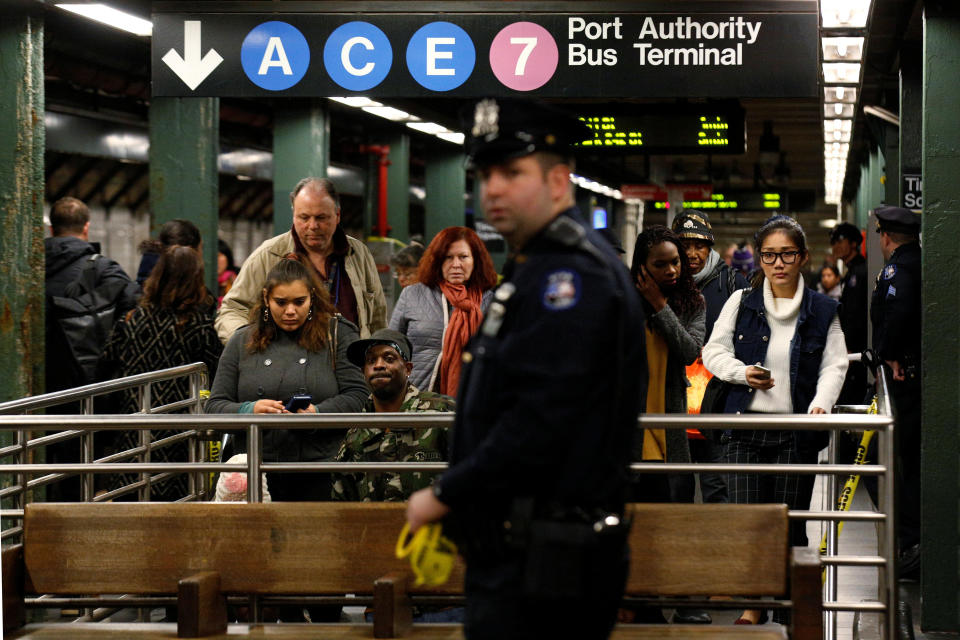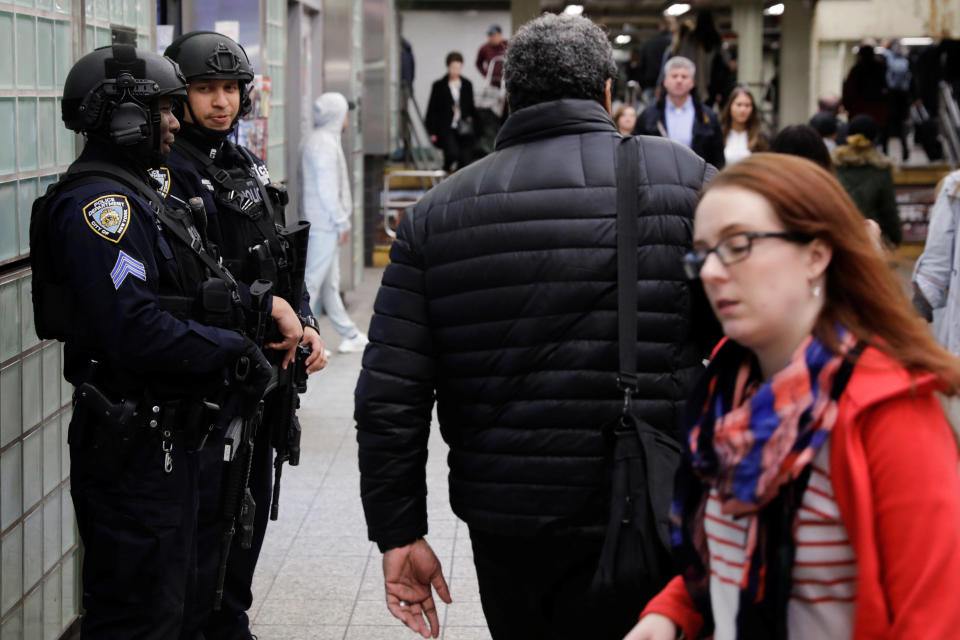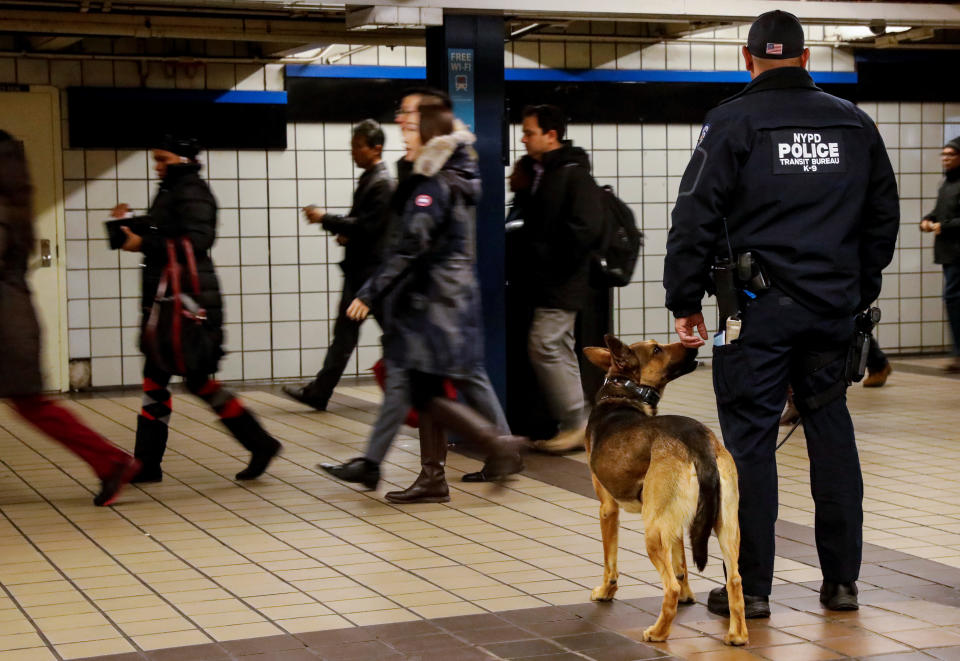How New York Guards Against Terror On Its Subway
Twenty-seven year-old Akayed Ullah suffered burns and lacerations on Monday after his attempt at attacking New York’s subway system went awry, and the makeshift pipe bomb under his shirt detonated but failed to have its devastating intended effect.
The incident appears to be the closest New York has come to joining the long list of major cities around the world that have seen terrorist attacks inflict mass casualties on their transit systems. Instead, the largely unsuccessful attack now ranks among New York’s history of close calls and foiled plots.
Although Monday’s bombing highlights that New York’s subway ― like any transit system ― is not invulnerable to terrorism, it also underscores the steps the city has taken to deal with such threats.
In recent decades, experts say the city has put in place a massive counterterrorism effort to increase security at locations that could be potential targets and train law enforcement to rapidly respond to lessen the harm if an attack does occur.

A Frequent Terror Target
Some of the most high-profile terror attacks in recent decades have involved transportation hubs, subway and rail systems. Deadly bombings in major cities including Madrid, London, Moscow and Mumbai have cumulatively killed hundreds of people. Terrorists have long valued transit systems as targets because of the potential for mass casualties, the ease of access and the level of disruption such incidents cause.
Although credit for many of the attacks in recent years has been claimed by Islamist extremist groups, targeting subways is not linked to any specific ideology.
In 1995, for instance, members of Japan’s Aum Shinrikyo cult deposited plastic bags filled with liquid sarin nerve agent on Tokyo’s subway system in an attack that killed 13 people and effected 6,000 others. Irish Republican Army militant factions planted bombs in and around the London underground system throughout the 1970s and again in the early 1990s.
New York itself has had several near misses, including a foiled plot in 1997 to set off explosives at Brooklyn’s busy Atlantic Avenue subway stop and a 25-year-old man’s 2009 attempt to carry out a suicide bombing on the subway. Just last year, law enforcement arrested three men for plotting to attack the subway system, Times Square and concert venues.
But since the Sept. 11 attacks, New York has also been able to prevent large-scale coordinated actions directed by extremist groups and has instead seen individuals employing low-tech means of carrying out their assaults.
“Individuals acting alone can be quite lethal and quite dangerous,” Nicholas Rasmussen, director of the National Counterterrorism Center, told PBS on Monday.
“But they also, at the same time, don’t — often don’t have the same high-level capability of a terrorist cell of the sort we saw during the al-Qaida-dominated era of a few years ago.”

New York’s Anti-Terror Apparatus
Part of the reason that New York has managed to avoid a large-scale attack on its subways, experts say, is because of the immense scale and resources put into its counterterrorism operations ― from patrolling subway cars to inter-agency intelligence gathering on possible plots.
“I don’t believe that it’s by luck that the New York City subways haven’t been attacked,” said Nick Casale, a former deputy director of counter-terrorism for New York’s Metropolitan Transportation Authority.
“The reason that the subways aren’t attacked is that there’s a tremendous vigilance” by the New York Police Department, he said.
Following the Sept. 11 attacks, New York developed one of the most well-funded counterterrorism apparatuses in the world. In total, the city spent around $540 million last year on anti-terror measures that included protecting the subways, airports and major tourist hubs.
When it comes to the transit system specifically, the NYPD initially looked at London for cues on anti-terrorism measures, according to investigator and counterterrorism analyst Anthony Roman. The department then set out to improve the U.K. systems, including its detection devices for dangerous materials and an elaborate network of surveillance cameras.
In addition to surveillance, almost 3,000 transit police patrol New York’s subway system each day and the NYPD has specific bureaus for transit and counterterrorism operations. After recent bombings on metro systems abroad, members of the NYPD have been trained in urban assault tactics and officers run routine sweeps of subway trains for suspicious activity. The city initiated random bag searches on the subway in 2005.
There is also extensive information sharing between different government agencies and law enforcement, in order to to provide authorities with the clearest picture of potential threats. The Joint Terrorism Task Force, made up of NYPD detectives and FBI agents, investigates terror-related cases pertaining to the city ― including collecting intelligence on foreign threats.
“It is simply the best integrated technological response and specialty unity counterterror program in the world,” Roman said of New York’s counterterrorism efforts.

But as shown by the deadly vehicle attack in Manhattan on Halloween, it’s extremely difficult to guard against every attack on any possible target ― which includes its subway system. Just as it’s unreasonable to expect every corner of New York to be heavily guarded, there are obvious difficulties in protecting a sprawling transit system with nearly 500 stations.
Experts note that extreme security can also be a detriment to how transit systems need to function.
“These systems are designed to move people quickly and allow them to gain access easily,” said Henry H. Willis, a senior policy researcher at the RAND Corporation. “That runs counter to some things you might want to do to increase security.”
Love HuffPost? Become a founding member of HuffPost Plus today.
This article originally appeared on HuffPost.

